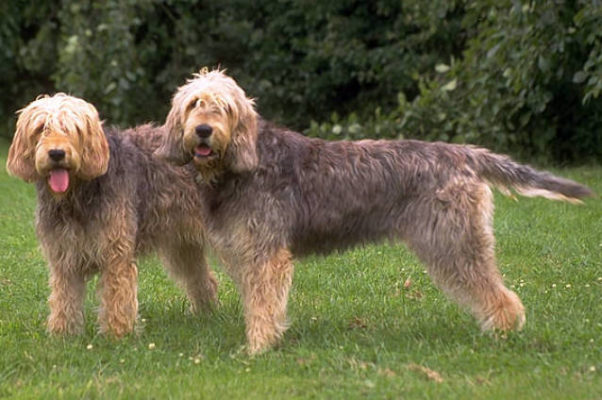Otterhound

Otterhounds are fun characters without a hint of aggression. They are fun, though somewhat noisy dogs who enjoy playing with their owners or other dogs. They usually interact very well with others. Their large size, fluffy coat, and smell mean they need an adult family that doesn’t mind getting dirty while communicating with the pet.
Table of Contents
Breed Information
| Another Name | – |
| Origin | United Kingdom |
| Height | Males 65-70 cm Females 60-62 cm |
| Weight | Males 50-55 kg Females 35-43 kg |
| Fur | Long, stiff, coarse, with a dense undercoat |
| Color | Black, black with red tinges, gray with tinges, wheat |
| Lifespan | 10-13 years |
| FCI Classification | Scent hounds and related breeds |
| Group | Dogs for hunting, dogs for kids |
| Price | From $300 |
Breed Photos
Origin History
Otterhounds has been a popular pastime in England since at least the 13th century, and hunting this intelligent, fast, and aggressive prey required a dog with unique abilities both on land and water. Otterhounds are thought to have been bred around the 1400s, although it was not until the early 19th century that packs of hounds that could be considered purebred were recorded in the northwest.
With the growing popularity of otter hunting in the twentieth century, its prowess was such that otter hunters themselves were forced to inform authorities of a critical decline in otter numbers in the late 1970s.
As a result, the otter has declared a protected species in 1978, and hunting was discontinued. While some Otterhounds were repurposed to hunt mink, demand for the breed declined precipitously. Many of the hunting hounds had temperaments that made them unsuitable as pets. They were stubborn and disinterested in human contact. Given the already low population base, it is believed that there are now only 600 Otterhounds in the world, with an average of 30 to 50 registered with the Kennel Club each year.
Appearance
The Otterhound is a large dog with strong limbs and a powerful torso. He has a large, imposing head with a broad, domed skull. The muzzle is long and wide, as you would expect from a hound dog, and the nostrils are just as wide and open. His lips and cheeks are heavy and loose, his jaw is strong, and his teeth are large.
The long hair around his face gives the breed a bit of a comical look. It also has bushy eyebrows, a puffy beard, and a mustache. The eyes are deep enough. The ears are planted at eye level and, surprisingly long, reach up to the nose when they fit over the face.
The breed has a long, strong neck and back with plenty of muscle. The chest is deep enough and curves nicely, reflecting adequate lung capacity. The abdomen is also broad, and the loin is powerful. The tail is thick, set high, and tapering toward the end. The limbs with well-placed corners are as strong as the rest of the body. The paws are large, thickly padded.
The coat grows to about 8 cm in length and can be any color, although gray, sandy, red, and mottled are the most common. The coat is rough, coarse, with a dense undercoat that makes it almost impermeable to water and should be left uncut. Male Otterhounds are usually 67-70 cm tall and weigh 50-55 kg. Females are noticeably smaller and more refined, measuring 60-62 cm and weighing 35-43 kg.
Character
Otterhounds are fun characters without a hint of aggression. They are fun, though somewhat noisy dogs who enjoy playing with their owners or other dogs. They usually interact very well with others. Their large size, fluffy coat, and smell mean they need an adult family that doesn’t mind getting dirty while communicating with the pet.
Otterhounds are also independent and decide when they haven’t had enough fun or, conversely, when they want to rest. Although they do bark when someone rings the doorbell, Otterhounds are too good-natured to be guard dogs.
Care
Although intensive grooming is not required, shaggy coats need to be brushed at least once a week, as they are prone to tangles. Never cut their hair, as this damages the hair shafts and can take years to grow out. Bathing should also be avoided if possible, as shampoos remove the natural secretions necessary for a healthy coat.
Food and other particles are often left on the board, and it becomes foul-smelling if not wiped after every meal. Most Otterhounds need their claws trimmed every few weeks to keep them from growing into their paw pads. It can usually be done at home using sturdy nail clippers.
Training
The breed’s independence and the speed with which it is distracted make training difficult. Owners of Otterhound puppies often seem to have great difficulty with the concept of house training.
Because of their size and tendency to jump on people, it’s important to develop some dog’s basic good manners patience, combined with rewards in the form of food, usually pays dividends over time. Otterhounds should not be allowed off-leash in open public places.
Common Diseases
In addition to being prone to joint disease, most Otterhounds are very healthy, with some inherited conditions such as:
- elbow dysplasia;
- epilepsy;
- Glanzmann’s thrombasthenia gravis;
- hip dysplasia;
- hypothyroidism;
- sebaceous gland cysts.
Nutrition
They are not fussy about food. However, chicken and chicken bones should be avoided. The Otterhound’s diet should be balanced and full of vitamins. Only high-quality food should be used, and the number of meals should depend on your dog’s activity level.
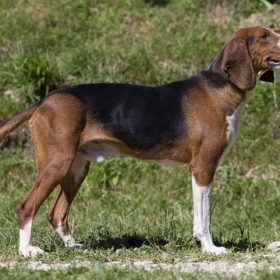 Serbian Tricolour Hound
Serbian Tricolour Hound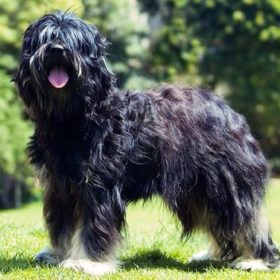 Portuguese Sheepdog
Portuguese Sheepdog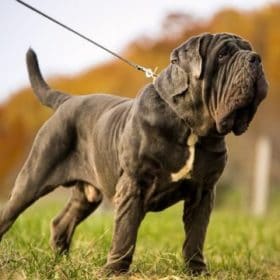 Neapolitan Mastiff
Neapolitan Mastiff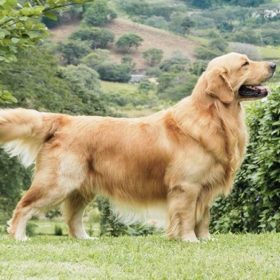 Golden Retriever
Golden Retriever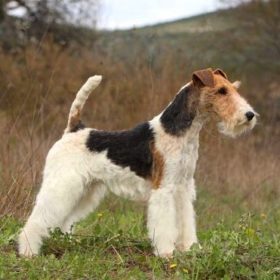 Wire Fox Terrier
Wire Fox Terrier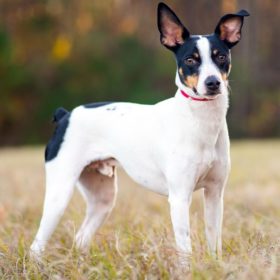 Rat Terrier
Rat Terrier

